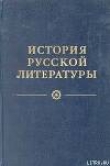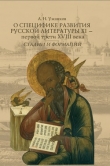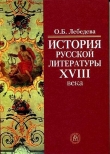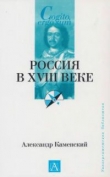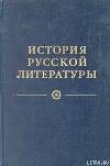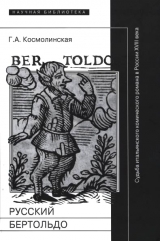
Текст книги "Русский Бертольдо"
Автор книги: Галина Космолинская
Жанры:
Культурология
,сообщить о нарушении
Текущая страница: 15 (всего у книги 16 страниц)
Список сокращений
ГИМ ОР– Государственный исторический музей, Отдел рукописей (Москва).
ГПИБ– Государственная публичная историческая библиотека (Москва).
ЖМНП– Журнал Министерства народного просвещения.
НБ МГУ ОРКиР– Научная библиотека Московского государственного университета им. М. В. Ломоносова, Отдел редких книг и рукописей.
НЛО– Новое литературное обозрение. М., 1992–2009.
РГБ МК– Российская государственная библиотека. Музей книги (Москва).
РГБ ОР– Российская государственная библиотека, Отдел рукописей (Москва).
РНБ ОР– Российская национальная библиотека, Отдел рукописей (Санкт-Петербург).
Сборник ОРЯС– Сборник Отделения русского языка и словесности Императорской Академии наук.
СК– Сводный каталог русской книги гражданской печати XVIII века. 1725–1800. Т. 1–5. М., 1963–1967.
СК. Дополнение– Сводный каталог русской книги гражданской печати XVIII века. 1725–1800. Т. [6]. Дополнение. М., 1975.
ТОДРЛ– Труды Отдела древнерусской литературы ИРЛИ РАН (Пушкинский Дом). Л.; СПб., 1934–2008.
BLC– The British Library General Catalogue of Printed Books to 1975. London, 1979–1987. 360 vols.
BNF– Bibliothèque nationale de France (Paris).
NUC– The National union catalog, pre-1956 imprints; a cumulative author list representing Library of Congress printed cards and titles reported by other American libraries. London: Mansell, 1968–1981. 754 vols.
Summary
G. Kosmolinskaya.
THE RUSSIAN BERTOLDO.
THE FATE OF AN ITALIAN COMIC NOVEL IN EIGHTEENTH-CENTURY RUSSIA: MANUSCRIPTS, PUBLICATIONS, READERS.
The popular comic novel by the Bolognese author, Gulio Cesare Croce (1550–1609), «Le sottilissime astuzie di Bertoldo» (1606), presented itself to Italian readers as a new, Italian Aesop («un l’altro Esopo»), and immediately became a genuine best seller. Over the course of two centuries it went through multiple editions, was translated into various languages (Greek, Portuguese, Spanish, Russian, Romanian, Croatian, French, German, English, Bulgarian and others) and was subject to several reworkings. The history of these translations and reconfigurations of Bertoldo has attracted the attention of scholars to some degree. This book constitutes the first full-length scholarly investigation of the «Russian Bertoldo».
Russian readers became familiar with Croce’s novel in the 1740s thanks to the initial manuscript translations, copies of which continued to circulate among non elite readerships until the end of the century. The «Italian Aesop’s» popularity in Russia, as was true everywhere, was connected with its archetype. Bertoldo’s kindred similarity to the old Russian Kitovras (Marcolph) as well as personages from popular market place theater (Gaer, marshalka) unquestionably facilitated its rapid recognition and embrace by Russian readers. However, this amusing «popular» little book elicited conflicting sentiments, with the level of interest came an equal measure of condemnation.
Over the centuries the primary reading material for Russians remained books of moral improvement. Entertaining literature and even laughter itself was judged by the church to be linked with sinful activity (reading books of this type was deemed the equivalent of adultery and was subject to a corresponding punishment. In the post-Petrine era the contradiction manifested itself as a stark split: on the one hand, one avidly sought out all that was new and even forbidden emanating from the West. On the other hand, one was deathly afraid. This dualistic attitude toward laughter, a product of the particularities of a conservative Orthodox consciousness, had existed for a long time in all strata of Russian society. Certainly, a human being’s natural inclination toward laughter, in spite of all, found its outlet in jocular behaviour: popular comedy, various types of travesties, jokes, games, puppet shows, farces, and simply «playing the fool» in various ways. There was a boom in manuscript translations of romantic adventures and rogue novels during the 1740’s as readers from Russia’s popular classes manifested increased interest in literature whose character was far removed from traditional concepts of edification. A notable shift in readers’ interest toward «non-edifying» and possibly even harmful reading arises, as the Polish Slavist Eliza Małeк has commented, already in the second half of the century.
If one examines the figure of Bertoldo, who voluntarilygives up his freedom for a place near the throne, from the perspective of the Renaissance, as the Italian specialist in cultural studies Piero Camporesi has done, then one sees that before us stands a «phenomenon of compromise». By contrast, in the context of Russian culture of the eighteenth and even the first half of the nineteenth centuries, this is a figure who manifestly conveys a rather distinct type of freedom-loving character of protest, signified by a healthy and by no means safe opposition to the traditional representations of sacral authority, regarding the explicitly estate-bound characterization of the individual, and along with it «sinful laughter», and the «uselessness» of amusing literature. The deep protest-based essence of the archetype on which Croce based his hero extended the life of the text among Russian readers for at least a century.
During the age of Enlightenment, when reading «Bova Korolevich» or «Eruslan Lazarevich» was already looked upon in Russia as vapid, «Bertoldo» could have rather easily fallen into the same category. But it was destined for a different fate. Croce’s novel successfully adapted to the times. By adjusting its register to that of the epoch it fell into line with Enlightenment satire, even though it thereby inevitably eliminating some characteristic features of the popular comedy. Now the French reworkings of «Bertoldo» (just like their Russian translations) gained acceptance and found their ways into the private libraries of the eighteenth-century nobility.
The wide range of venues in which the Russian «Bertoldo» appeared throughout the century (from «popular» novels to theatrical versions and Enlightenment interpretations) bears witness to a rather rare phenomenon, the reading of a specific text simultaneously in «low» and «elite» strata of Russian society. The polyvalence of an archetype reborn on new soil enabled it to resonate in an unsurpassed way both with those older cultural demands which still survived in Russian society, as well as to new ones evoked by the epoch.
The monograph is structured in the following way:
Beside the historiographic foreword and conclusion there are three chapters:
1) The genesis of Bertoldo. Translations and reworkings of the novel in 17 th– 18 thcenturies.
2) The Russian «Bertoldo»: manuscripts, editions, and texts for staging.
3) «Bertoldo» and the Russian reader of the 18 thcentury.
A previously unknown Russian translation of «Bertoldo» occupies a central place in the monograph, published here in full on the basis of manuscript no. 191 in the library of Moscow University, and accompanied by linguistic and historical-culturological commentary. The appendix also includes some unknown and little known texts connected to the fate of «Bertoldo» in eighteenth-century Russia.
Visual material occupies an important place in this study. The illustrations for «Bertoldo» were quite popular, and in Italy they even gained an independent standing. Throughout the course of the seventeenth and eighteenth centuries they went through an artistic evolution in this «rationalist direction» through which the novel’s text underwent quite a few changes. The selection of illustrations consists of unique drawings for the Russian manuscript translation of «Bertoldo», models of western European book graphics of the seventeenth and eighteenth centuries, as well as other iconographic sources, which substantively enrich the history of this Italian «popular» book in eighteenth-century Russia/

